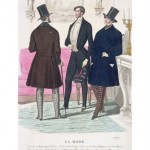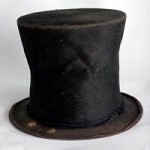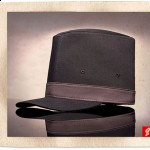Courtney for 9/27
Whitman and myself have been spending a lot of time together recently. What with a 12+ hour excursion through his old stomping grounds accompanying the usual weekend hours dedicated to him. Although my understanding of Whitman as a man has been illuminated, there’s still one thing that I can’t quite figure out: the Lincoln crush. President Lincoln was, by all accounts a pretty impressive man. I can see why Whitman specifically would be fond of him. However, I just can’t sort out the personal way that he speaks of the fallen President. When Whitman speaks of Lincoln, it’s not with the overtly sexual language of the Calamus poems; nor is it with the lusty descriptions of the young soldiers in Drum Taps. Whitman’s love for Lincoln seems pure and deeply personal. In fact, I had assumed initially that Whitman and Lincoln must have been good friends to inspire the poetry and prose about Lincoln.
It of course is not hard to figure out why Whitman would admire Lincoln. The President embodied much of what Whitman called all Americans to be. He noted Lincoln’s “perfect composure and coolness.” Lincoln was also a outdoorsman, a man who was familiar with the common people, had experience in nature, and valued not just academic knowledge but more importantly common logic and reasoning. His physical stature also caught Whitman’s attention. A tall and burly man, he resembled the ideals of what Whitman thought a man should look like. Lincoln was a new embodiment of the great poet who would come to save the nation.
As much as I hate to admit it, I can’t help but feel that Lincoln’s love for Whitman dims a bit in comparison to his other descriptions of love for different people. Whitman really admired Lincoln as a man and as the President, and although he crafted some powerful prose in tribute to Lincoln, I have trouble equating it to some of his other descriptions of love and admiration. In Calamus, Whitman spoke brazenly of sex and physical attraction. Whitman spoke intimately of relations with both men and women in a way that he only could by drawing from personal experience. In class we have explored whether or not Whitman’s relationships with the young soldiers was appropriate, but after seeing his journals yesterday, it is clear that his concern for the broken young boys was genuine.
When it comes to Lincoln, Whitman’s tone is so intimate. It goes beyond admiration and in to this realm where is seems that Whitman is imagining that the two have a relationship that just did not exist. I do not understand why Whitman could not express his feeling for the President without going stepping in to “creepster” territory. I had hoped that through writing this blog I would answer some of my own questions. Unfortunately, I am still stumped.
Filed under Uncategorized | Tags: ww02, ww20 | Comment (1)Material Culture Museum Entry- Stove Pipe Hat
 Atop over six feet of President Lincoln’s thin body sat what is perhaps his most recognizable feature: a top hat. Besides his other obvious contributions to America’s history, Lincoln also started a major fashion trend. While most top hats of the time were about seven inches tall, Lincoln urged his higher and higher, sometimes wearing one that gave him an extra thirteen inches, giving his version of the original the name “stovepipe hat.” The extra space was not just fashionable, it was also practical; Lincoln kept important letters and documents tucked up between the crown and the headband (Zaslow, Jeffrey). He was even wearing one at Ford’s Theater on the night of his assassination. This infamous night may not have been the first attempt on Lincoln’s life while he donned his signature headgear. It is reported that in August 1864 a sniper shot at Lincoln as he was riding up the drive at The Soldier’s Home. He is said to have cavalierly reported the incident as a fluke and company men found his hat on the ground the next day, with a bullet hole through it (Norton, R.J.).
Atop over six feet of President Lincoln’s thin body sat what is perhaps his most recognizable feature: a top hat. Besides his other obvious contributions to America’s history, Lincoln also started a major fashion trend. While most top hats of the time were about seven inches tall, Lincoln urged his higher and higher, sometimes wearing one that gave him an extra thirteen inches, giving his version of the original the name “stovepipe hat.” The extra space was not just fashionable, it was also practical; Lincoln kept important letters and documents tucked up between the crown and the headband (Zaslow, Jeffrey). He was even wearing one at Ford’s Theater on the night of his assassination. This infamous night may not have been the first attempt on Lincoln’s life while he donned his signature headgear. It is reported that in August 1864 a sniper shot at Lincoln as he was riding up the drive at The Soldier’s Home. He is said to have cavalierly reported the incident as a fluke and company men found his hat on the ground the next day, with a bullet hole through it (Norton, R.J.).
Although he may have popularized the style, he did not invent it. That credit goes to John Hetherington, a hat-maker from London who designed the style in 1797. When Hetherington debuted his prototype by wearing it out on the streets it caused such a commotion that he was arrested and fined for causing a disturbance. A subsequent law was made in London banning them after the police chief reported, “people booed, several women fainted and a small boy got his arm broken” in the riot incited by Hetherington(Scrivens, Louise). The law was eventually abandoned and the top hat enjoyed a surge of popularity.
Hetherington, a hat-maker from London who designed the style in 1797. When Hetherington debuted his prototype by wearing it out on the streets it caused such a commotion that he was arrested and fined for causing a disturbance. A subsequent law was made in London banning them after the police chief reported, “people booed, several women fainted and a small boy got his arm broken” in the riot incited by Hetherington(Scrivens, Louise). The law was eventually abandoned and the top hat enjoyed a surge of popularity.
Originally, these hats were covered with fur. Beaver fur was more common among the higher social classes, while the middle-class version used rabbit fur. Covering the fur with oilcloth created a smoother look and eventually hat-makers used silk to create the style that we recognize today. This silky style developed by Hetherington was slow to catch on until Prince Albert adopted them, making them a fashion staple in Europe and The United States(Curiosities). As an unexpected result of the trend, the beaver-trapping trade in America greatly declined(Feinstein, Kelly).
 In the 19th century these hats reached the peak of their popularity. Their endorsement from admired political figures made them a status symbol among the upper class and especially those involved in politics. However, their popularity died out due to the high costs of making the specialized product. Eventually they became a sort of caricature. Uncle Sam wears one and it has been depicted satirically as a symbol for capitalism. Throughout recent memory, the top hat has retained its historical ties to nobility and class. It is still worn at some formal functions or as part of some official uniforms. There was brief resurgence of popularity for the style when in the 1920’s and 30’s it was associated with the pop culture of the time, prompting Fred Astaire and Ginger Rogers to title one of their most popular productions, “Top Hat.”
In the 19th century these hats reached the peak of their popularity. Their endorsement from admired political figures made them a status symbol among the upper class and especially those involved in politics. However, their popularity died out due to the high costs of making the specialized product. Eventually they became a sort of caricature. Uncle Sam wears one and it has been depicted satirically as a symbol for capitalism. Throughout recent memory, the top hat has retained its historical ties to nobility and class. It is still worn at some formal functions or as part of some official uniforms. There was brief resurgence of popularity for the style when in the 1920’s and 30’s it was associated with the pop culture of the time, prompting Fred Astaire and Ginger Rogers to title one of their most popular productions, “Top Hat.”
Despite the changing attitudes of what the hat represents, Lincoln’s stovepipe will always serve as an iconic image and the hat he was wearing on the night of his death can be viewed today at the Smithsonian. The tattered and worn relic is still encircled with the black band that Lincoln used to tribute his dead son(Harding, Allison). There are also two finger-sized holes in the brim, where Lincoln always touched when taking his hat on or off (BBC).
as an iconic image and the hat he was wearing on the night of his death can be viewed today at the Smithsonian. The tattered and worn relic is still encircled with the black band that Lincoln used to tribute his dead son(Harding, Allison). There are also two finger-sized holes in the brim, where Lincoln always touched when taking his hat on or off (BBC).
The style could even be experiencing a revival in the wake of the 200th anniversary of President Lincoln’s birth. The stovepipe hat is a vastly recognizable symbol for the president, and many  are using it in different forms of tribute. As part of the 21st Century Abe Project, hat distributor; Quintin produced a modern-day spin on the original. The reproduction is modeled after today’s baseball hat but “includes a wool outer, and satin lining with a letter written to Gideon Welles by Lincoln”(Quintin,com). In Illinois, the town of Springfield honored Lincoln with a community-wide art project featuring fiberglass recreations of Lincoln’s hat, all several feet tall and painted with historic images(Reynolds, John).
are using it in different forms of tribute. As part of the 21st Century Abe Project, hat distributor; Quintin produced a modern-day spin on the original. The reproduction is modeled after today’s baseball hat but “includes a wool outer, and satin lining with a letter written to Gideon Welles by Lincoln”(Quintin,com). In Illinois, the town of Springfield honored Lincoln with a community-wide art project featuring fiberglass recreations of Lincoln’s hat, all several feet tall and painted with historic images(Reynolds, John).
For Whitman, a man in a top hat would have been a fairly common experience, but he identifies it with President Lincoln as in Specimen Days when he recalls, “Mr. Lincoln in the saddle…wears a black stiff hat and looks about as ordinary in attire at the commonest man”(p.733). The stoic effect of the hat has served as a symbol for success and power since its arrival on the market. No doubt it only amplified President Lincoln’s dignified grace, making him an even more interesting character in Whitman’s eyes. The stove pipe hat has endured a very colorful and prominent history, from inciting riots to witnessing a presidential assissination.
Works Cited
“Abe Stove Pipe Hat by Quintin.” Quintin. 4 May 2009. Web.
“Curiosties.” Civil War Times 43.3 (2004): 67-68. Print.
Feinstein, Kelly. “Fashionable Felted Fur: The Beaver Hat.” Thesis. History Department, UC Santa Cruz, 2006. Print.
Harding, Alison. “Smithsonian exhibit pays homage to Lincoln.” CNN.com/US. Web.
Norton, R.J. “A Shot Through Abraham Lincoln’s Hat.” Abraham Lincoln Research Site. Web.
Reynolds, John. “Stovepipe hats to go on display starting today.” The Stat Journal-Register. 28 May 2009. Web. <sj-r.com>.
Scrivens, Louise. “Changing the flaws in London’s Laws.” BBC News. Web.
Zaslow, Jeffrey. “A Hatless JFK: Inaugural Moments That Became Cultural Turning Points.” Wall Street Journal- Eastern Edition. 20 Jan. 2005. Web.
Image Citations
Allan Pinkerton, President Abraham Lincoln and General John A. McClernand, October 3, 1862. Photograph. National Archives. Lincolnstudies.com. Web.
Men’s Fashion. Advertisement. La Mode 19 Mar. 1852. Print.
Perlman, Seth. Abraham Lincoln’s Hat. Photograph. AP, Seattle. The Seattle Times. 18 June 2007. Web.
Abe Stovepipe Hate. Photograph. Quintin Hats. Quintin. 4 May 2009. Web. <quintinco.com>.
Filed under Uncategorized | Tags: digitalmuseum, ww02, ww20 | Comment (0)Courtney for 10/20
Whitman himself warned an admirer, “You must not construct such an unauthorized and imaginary ideal Figure, and call it W.W. and so devotedly invest your loving nature in it. The actual W.W. is a very plain personage, and entirely unworthy such devotion.” I think that this quote reveals a lot about Whitman and his attitudes about himself as a person and as a public figure. Clearly not comfortable in the spotlight, Whitman struggled with his persona. He seems like the type to shy away from the limelight. I shutter to think how Walt would deal with today’s constant media attention. For him though, his work was deeply personal and had such an emotional effect on his readers. In his work he revealed a quite private part of himself, creating an intimate relationship with his readers. He gave readers what they needed most, an honest portrayal of America’s history that they could connect with.
It seems odd to me, however, that Whitman was so fast to give out love and affection but so reluctant to accept it. At the army hospital, Whitman gave out his affections freely. He wrote brazenly about kissing the soldiers and touching them but also about really caring for them in a very innocent and loving way. He calls everyone to connect with each other as comrades and lovers, yet he seems uncomfortable with the idea of people reaching out to him. I wonder how Whitman would have felt if he had been a wounded soldier. Some accounts of his relationship with the soldiers indicate that the feelings were not mutual. Is it possible that Walt could dish it out but not take it?
Much like the wounded soldiers in the hospitals, the reader too does not have a choice but to accept Whitman’s ideas. Sometimes when I’m reading a rambling list or diluted resolution I feel like I’m just laying there having it thrown at me. There’s nowhere to go and nothing to do but listen. Whitman, it seems, is more comfortable in the more powerful position in a relationship. He thrives when he is a caregiver and can control his audience. However he seems shy with anyone who can challenge him or mirror his madness. Even with his brother George, he was far more affectionate and open about his concerns for his brother.
Whitman has the ability to capture his audience regardless of who they are. He was magnetic in person, an excellent listener and a careful observer. He was a classic introvert who craved relationships and interaction but needed time alone to reflect.
Filed under Uncategorized | Tags: ww02, ww20 | Comment (1)Courtney for 10/6
In class last Tuesday we mentioned a certain part of Memorandum where Whitman sort of casually mentioned that the war was over and then went about accounting on the patients he was seeing and his daily duties and activities. We talked about how, for Whitman, the war was not yet over. He was not concerned with the battleground statistics that we learn about in history books. Whitman’s experience of the war was unique in that he never saw actual battle, but knew perhaps better than anyone what the outcome of it was. His wartime experiences changed him dramatically as a writer and as a person. Just as he was less concerned with the fact that the war had officially been deemed “over,” his ideas about his writing and their influence were also shifting.
The fact that Whitman would even ask a question like, “Must I change my triumphant songs?” speaks volumes about his changing perspective. Where we had once seen a Whitman that was so sure of himself (almost to a point of fault), we begin to see an uneasiness brought on by the terrible experiences of war and the changes that such trauma will bring. When the smoke cleared and the battle cries finally died out, I get the feeling that Whitman was left wondering if anyone really cared about the majesty in a blade of grass anymore.
Whitman did change his “triumphant songs.” The diaries that he kept were concise and accurate in a way that deviates from his traditional style in a very obvious way. These notes and observations went on to become detailed accounts of his experiences. In much of the post-war poetry, the ambiguity is cut out and replaced with jarring details of war carnage that are almost the exact opposite of his previous ramblings.
I remember reading Song of the Open Road at the beginning of class. An avid adventurer, I was really inspired by lines like-
I think heroic deed were all conceiv’d in the open air and all free poems also, I think I could stop here myself and do miracles, I think whoever I shall meet I shall like, and whoever beholds me shall like me, I think whoever I see must be happy.
Later, in Drum Taps, his attitude has changed-
LONG, too long America, Traveling roads all even and peaceful you learn’d from joys and prosperity only, But now, ah now, to learn from the crisis of anguish, advancing, grappling with Direst fate and recoiling not, And now to conceive and show to the world what your children en-masse really are, (For who except myself has yet conciev’d what you children en-masse really are?)
Perhaps Whitman, like America, had grown too complacent on an easy path. It took the crisis of the Civil War for America to rebuild a stronger and freer union. Likewise, although Whitman’s poetry was changed after the terrors he experienced, it only became stronger and more balanced.
Filed under Uncategorized | Comments (5)